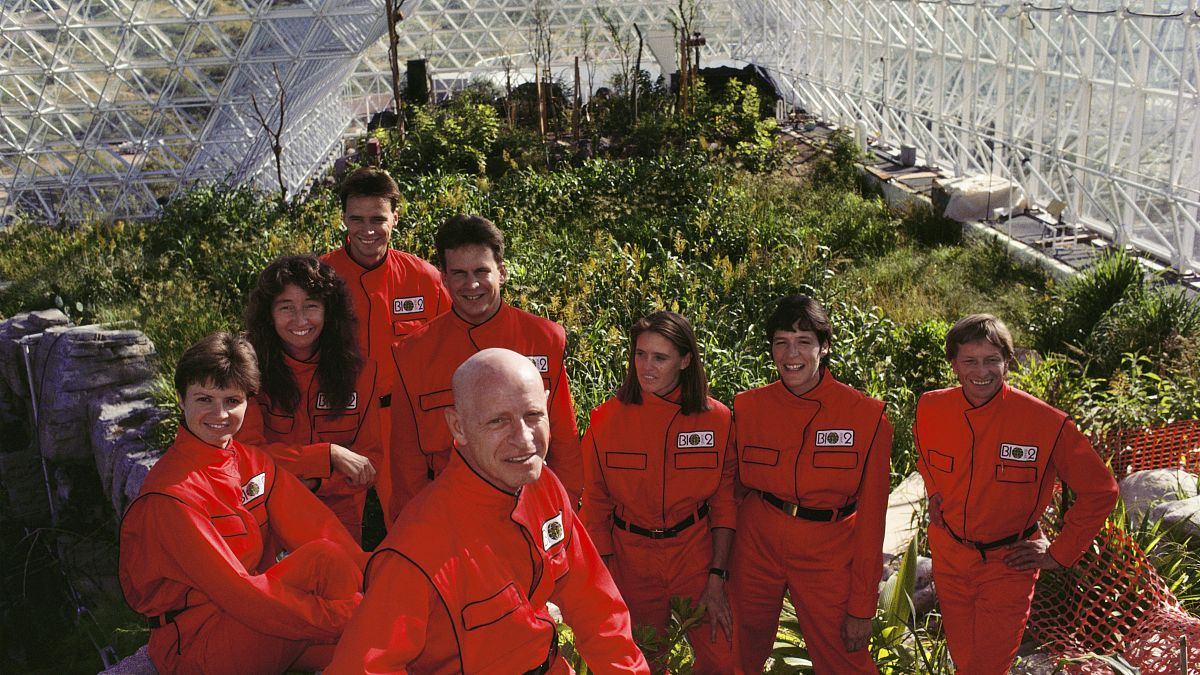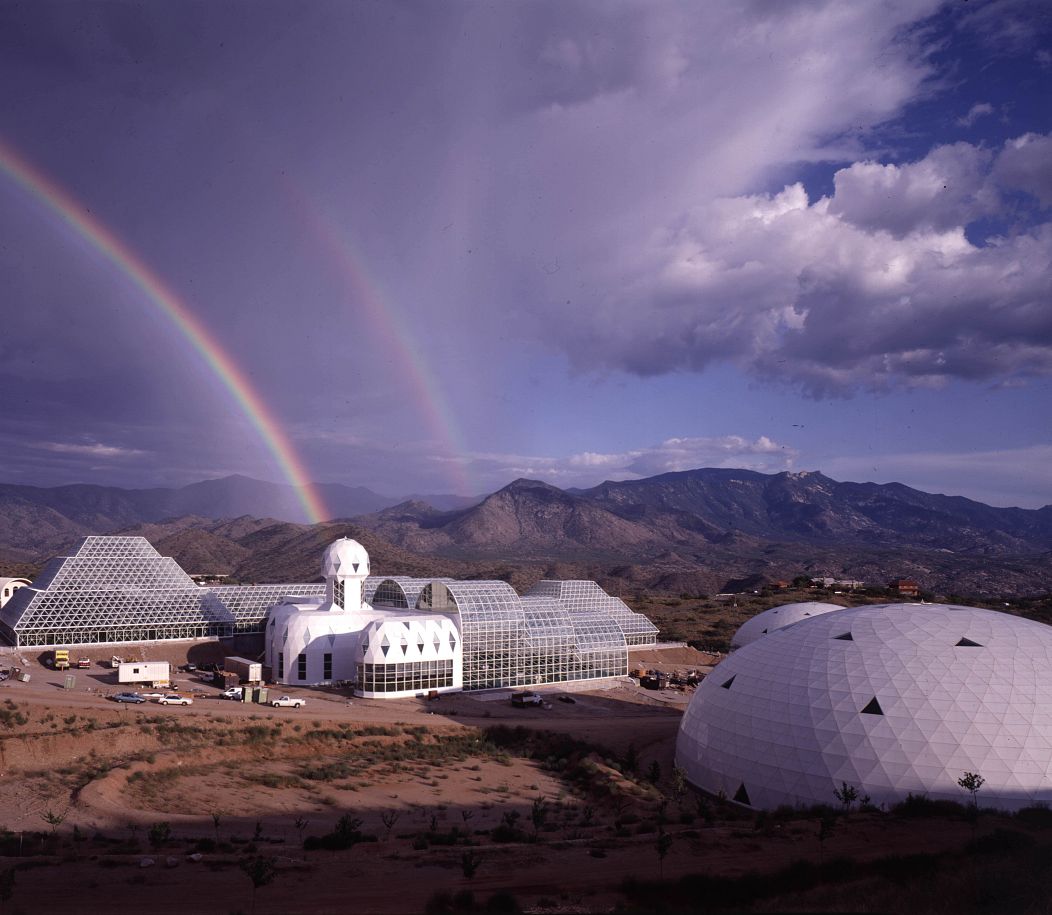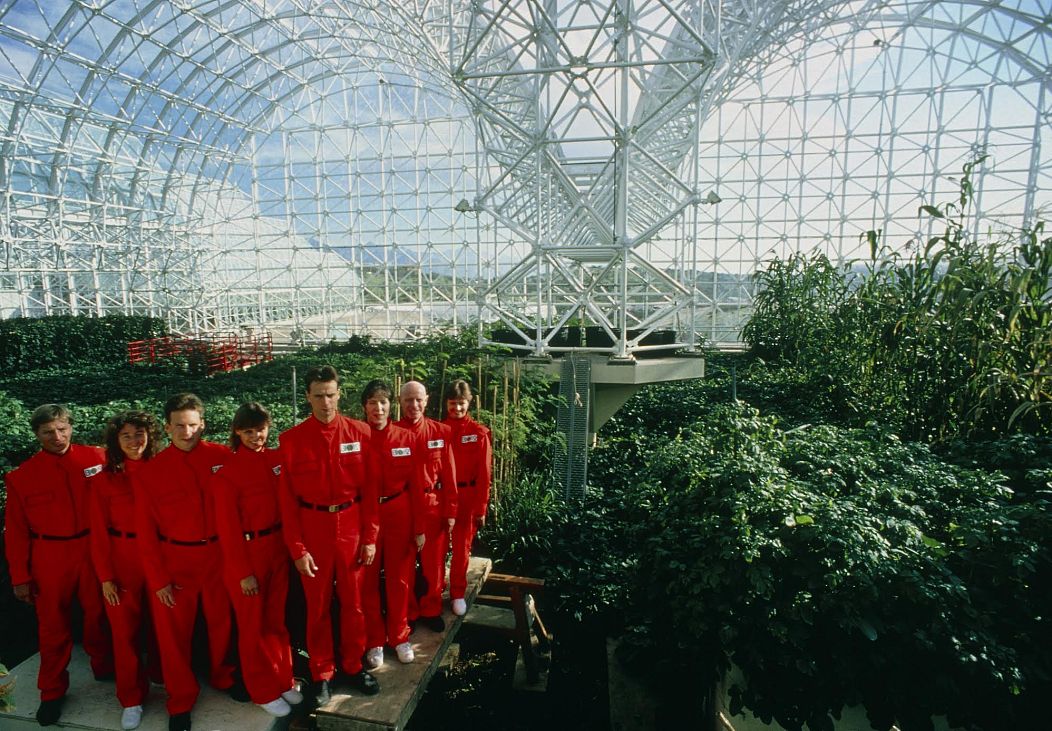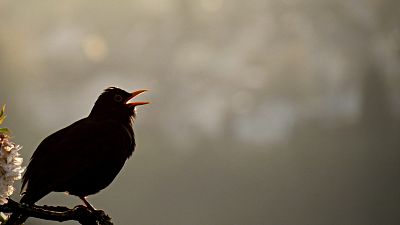Living in a bubble: Did this failed 90s experiment predict the future?
The story of Biosphere 2 is controversial but those who took part say it taught them a lot about respecting the planet.
In 1991, eight people started a two-year adventure that would see them quarantined inside a replica of Earth’s ecosystem. It is a futuristic story straight out the pages of a sci-fi bestseller that has since been overlooked and discounted for its controversial collapse.
The huge environmental experiment, considered a failure at the time, was conducted in a 1.27 hectare vivarium in the Arizona desert.
After the Space Race of the 70s and 80s, the possibility of travelling to Mars (and beyond) was in sight. When creating the project, named Biosphere 2, scientists, engineers and businessmen set out to solve the problems of extraterrestrial survival.
Over seven years, a collection of sealed domes and greenhouses were constructed in Arizona, US to recreate earth on a smaller scale. The environment contained an 836 square metre ocean - with its own coral reef, desert, savannah grassland, and mangrove forest.
During the experiment, the ‘biospherians’ were expected to cultivate their own food and drink, while also maintaining liveable levels of carbon dioxide and oxygen - all with as little outside help as possible.
One of the biggest challenges was creating a world that could support life, without polluting the carefully controlled environment.
Everything taken into Biosphere 2 had to be screened for noxious gases that could put the inhabitants at risk. Even health and beauty products like chemical deodorants were banned. In order to prevent harmful substances from upsetting the ecosystem’s delicate balance, natural materials like wool and wood were used in living areas.
But it didn’t go exactly to plan. Oxygen levels became dangerously low as the plant life couldn’t keep up with carbon dioxide levels. Any oxygen that was produced was converted into CO2 and absorbed by the unsealed concrete used to make the habitat.
Animals and plants started to die at an alarming rate and a lack of resources split the group into two warring factions. It drew the attention of the press and controversy came shortly after with criticism of the project’s charismatic counter-culture inventor, John Allen at the centre.
An article in the environmental journal Ecology called the experiment “New Age drivel masquerading as science”, and ecologists discounted their findings for their lack of peer review.
What can we learn from Spaceship Earth?
Those that took part in Biosphere 2 re-entered mainstream society with a completely new perspective. In 2018, scientist Mark Nelson explained that coming back to a world with extensive rubbish and pollution, where he couldn’t see how his food was produced, was “strangely disorientating”.
Being a part of the experiment made him more aware of how delicate an ecosystem can be. “Everything we did had consequences and greatly increased our mindfulness,” he said in a piece for the Dartford Alumni Gazette.
He revealed that the crew of eight learned a lot about keeping stressed coral reefs alive, protecting the rainforest, and working with the environment to reduce CO2 levels. These lessons about problems we face, as the threat of the climate crisis heightens, have led scientists to use the previously defunct facility to study climate change in recent years.
'Unconventional visionaries'
Spaceship Earth is a documentary released in 2020 that chronicles the story of Biosphere 2.
For director Matt Wolf discovering the history of this project made him realise that it was really a story about the entire world. These “unconventional visionaries” didn’t fail because of their unrealistic ambition, he said in a statement to the press, but instead, because it was started with eventual profit as a goal.
“Capitalism thwarts vanguard idealists,” Wolf added.
Premiered at the Sundance Film Festival, the film’s public launch coincided with a similar ‘experiment’ being unwittingly conducted on a global scale, the COVID-19 pandemic.
“While making this film, I never could have imagined that a pandemic would require the entire world to be quarantined,” said Wolf.
“Like all of us today, the biospherians lived confined inside, and they managed day to day life with limited resources, often under great interpersonal stress.
“But when they re-entered the world, they were forever transformed. No longer would they take anything for granted - not even a breath. In light of COVID-19, we are all living like biospherians, and we too will re-enter a new world. The question is how will we be transformed?”





